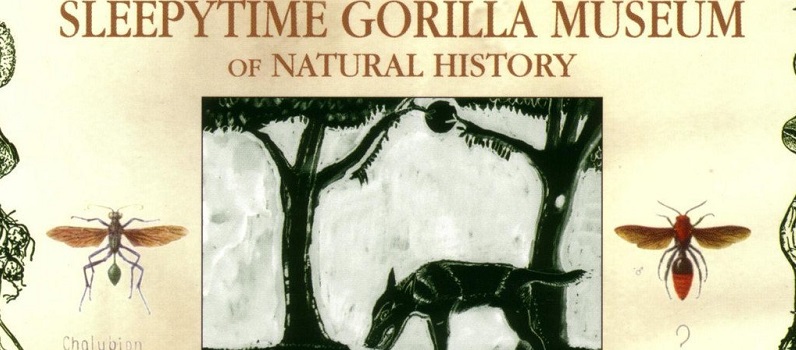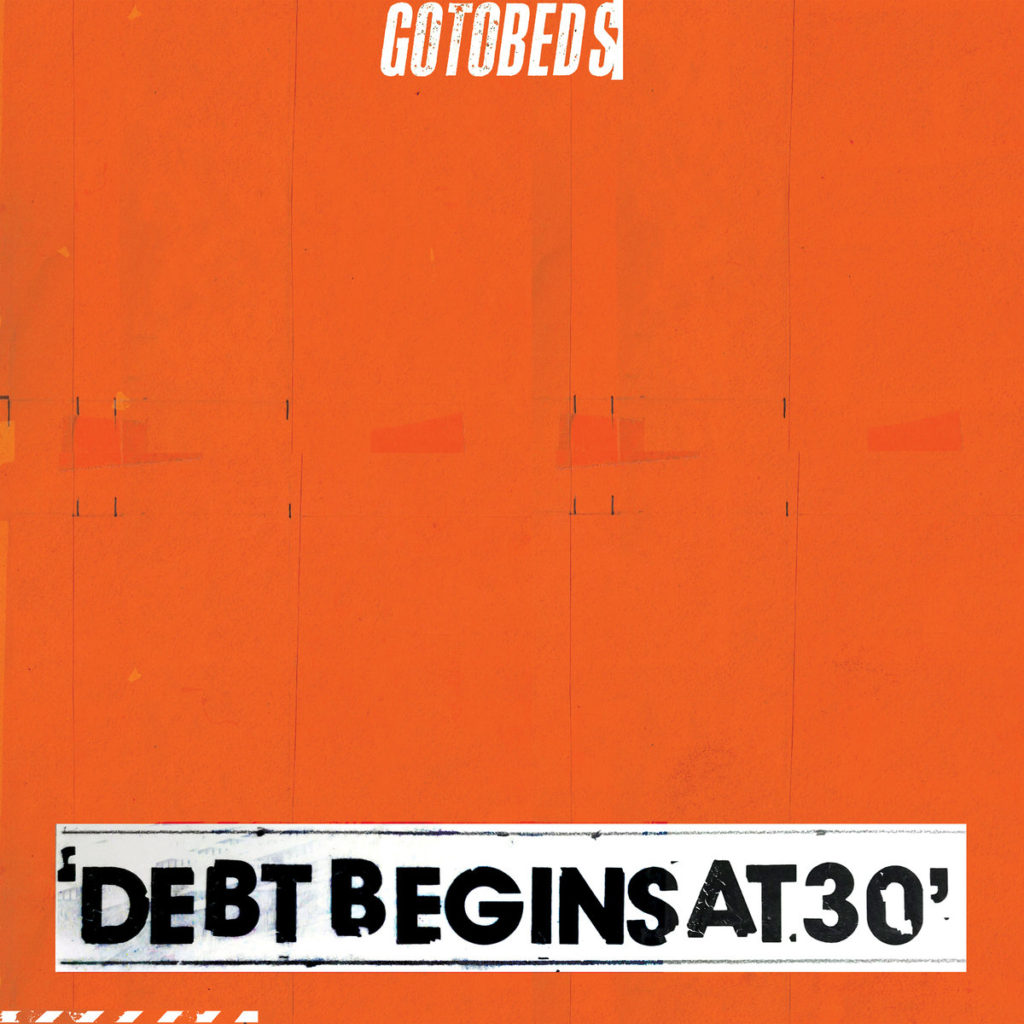Later this month, something will come creeping out of the shadows with its teeth and foaming mouth exposed to the moon, a rabid and ferocious beast masquerading about as a wandering but wild-eyed phantom. This has nothing to do with Halloween, and anyone expecting a bunch of overzealous young trick-and-treaters best test the speed at which they can cork a dead-bolt. No, the beast is the new record from the California collective Sleepytime Gorilla Museum and, in addition to being one of the more genuinely horrifying discs to be released this year, it also may be one of the most horrifyingly good.
While the band’s frenetic cut-and-paste method of genre-bending composition clearly calls to mind the middle- and late-period work of fellow Californians Mr. Bungle, there’s more at work on the 11-track disc than just the self-conscious playfulness of postmodern sound collages. Not content to merely mix genres in a dark, bizarre, and often-furious blend of (for sincere lack of a better term) art-rock, Sleepytime Gorilla Museum cranks up the exhibitionist factor to somewhat unforeseen levels, making outfits like the Patton- and Spruance-fronted Mr. Bungle and Ipecac darlings Melvins seem downright subtle in their respective deliveries and plans of attack. The record is sprawling and ambitious. It’s bombastic and explosive. It’s highly plotted and yet highly volatile. And, when it comes to theatricality — comments about the band’s stage attire or concert presence aside — Sleepytime Gorilla Museum gives the camp of Rocky Horror Picture Show a run for its money. In short, this is the record those violent youths from A Clockwork Orange would have made if they were caged in solitude for months and then released into a room where their only outlet was captured right on magnetic tape.
After the warm-up narration of the album-opening “A Hymn to the Morning Star,” things really get rumbling with “The Donkey-Headed Adversary of Humanity Opens the Discussion,” one of the record’s most pummeling tracks and, also, one of its best. Here, singer Nils Frykdahl unleashes a litany of roared and barked stanzas over tightly wound guitar, bass, and drum lines that shift between time signatures and jump between jagged stops and starts as frequently as they seem to change notes or chords. Crunched between verses that either sound vaguely like Cop Shoot Cop or the refrains off Cheer-Accident’s Enduring the American Dream, the listener’s treated to unexpected flourishes — a woodwind (?) solo, a nursery-school rhyme interjection from guitar, a bridge of voices that sounds like a handful of doped-up pre-schoolers reminiscing on various ways to die. (Somewhere, Edward Gorey is smiling.) One of the details that stands out most, though, is the carefully recorded work of Carla Kihlstedt, whose violin provides a color and definition here that Sleepytime’s other elements can lack. With Tin Hat Trio, Kihlstedt’s violin was enveloping, conversational, sometimes even flirtatious. On “The Donkey-Headed Adversary of Humanity Opens the Discussion” and elsewhere herein, her strings carry darker and more sinister tones. Her bow can sound like it’s ripping your heart out or being used to saw through bone. It’s Kihlstedt who also provides some of the finer moments on “Phthisis,” where she sweetly moans and wails as the band pounds along, her plaintive voice playing the part of a kind of damsel in distress among the Armaggedon the rest of the band creates with such apparent relish.
But to single out Carla Kihlstedt is to ignore or understate the frightening chemistry and interplay between Sleepytime’s other members. This can be heard on more than a few of the record’s more dense pieces, whether it’s the tension-building scales and percussion pitter-patter that defines the first half of “Bring Back the Apocalypse” or the unhinged — but incredibly precise — rage of “FC: The Freedom Club,” where the band seems to violently lunge toward a kind of self-induced combustion after someone plainly reads lines like, “And let us never forget that the human race with technology is like an alcoholic with a barrel of wine.” (I can only imagine the musicians of Cop Shoot Cop of Ask Questions Later and Release listening to this and feeling like they didn’t go far enough with their own Molotov cocktail of post-industrial noise-punk.)
The second half of Sleepytime Gorilla Museum of Natural History loses volume, to a degree, but not as much steam. Songs like “Gunday’s Child” and “The 17-Year Cicada” and even the epic “Babydoctor” have their peaks and valleys and unanticipated eruptions, but they also shine light on (relatively) quieter moments, where atmosphere, found sounds, and dialogue clips build stories and sentiments as much as Frykdahl’s roars or full-throated, darkened theater narration. In the end, though, that big and often-theatrical delivery is what clings to the gray matter, to the point where Sleepytime seems to have created a world with its own inherent sense of delivery, tone, and performance.
The result? When, in the appropriately titled “The Creature,” a series of subdued voices whisper about a creature living off the fat and famine of enslaved subjects, the listener doesn’t ingest it as a metaphor or an extended allegory. We just honestly believe this bizarre outfit could inhabit a nightmare world where giant demons hold court. The album-closing “The Cockroach” — a lamentation on killing the title being, it seems — hits similar notes of unexpected literal-mindedness, a peculiar mix of quiet instrumentation (is that a mandolin?) and a sometimes-screamed, sometimes-Elfmanesque chorus of vocals that is too direct to not be read literally and too strange/strangely inviting to not be read at all. That may be a fitting summary for the record in its entirety.
If you’re willing to sit back and let the ensemble have its way with you, Sleepytime Gorilla Museum of Natural History can be a breathtaking and truly rewarding, if slightly disconcerting, experience. If you’re not, then you better take shelter, lock your doors, and get the hell out of the way. – Delusions of Adequacy, Oct. 7, 2004




